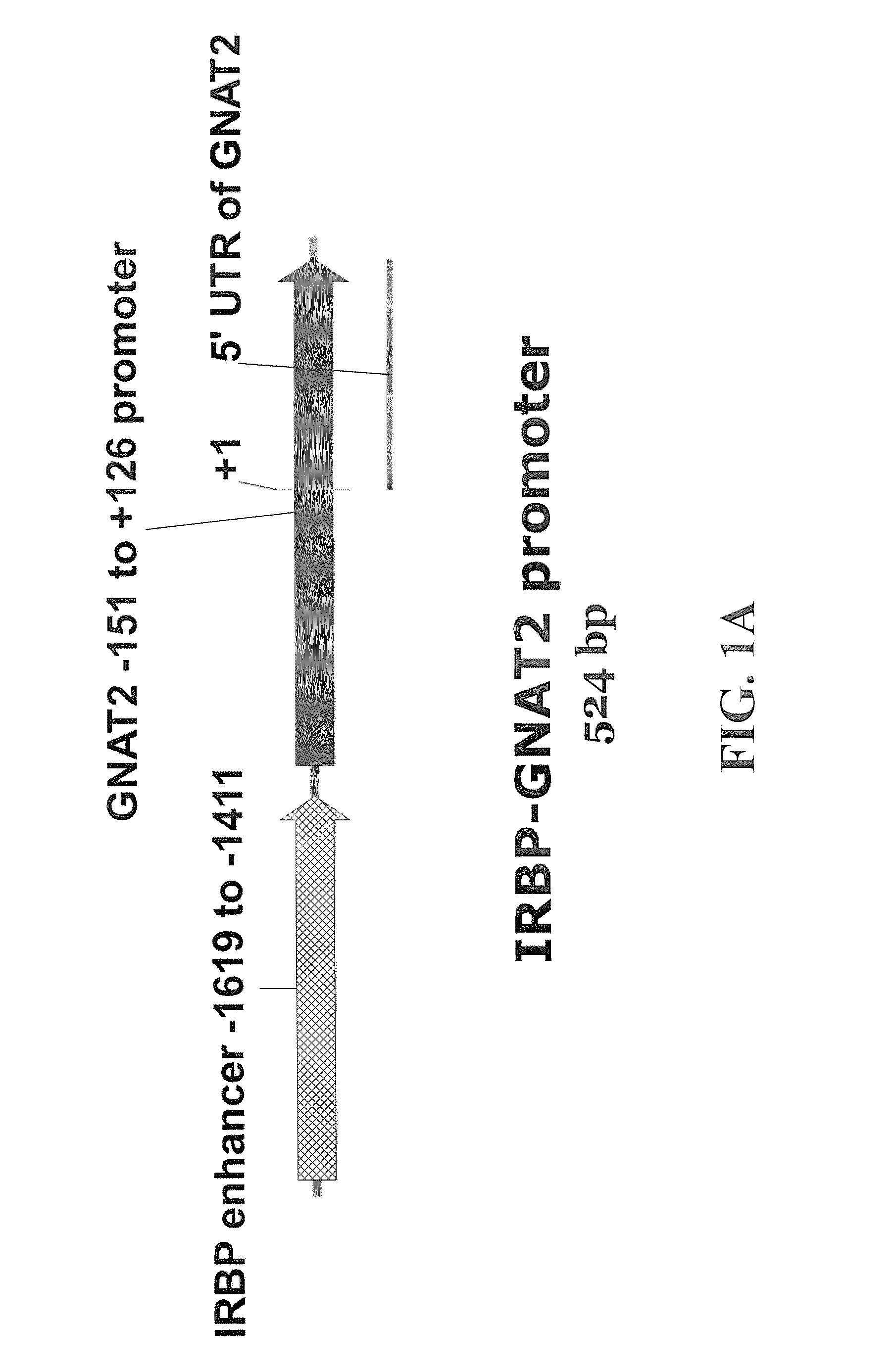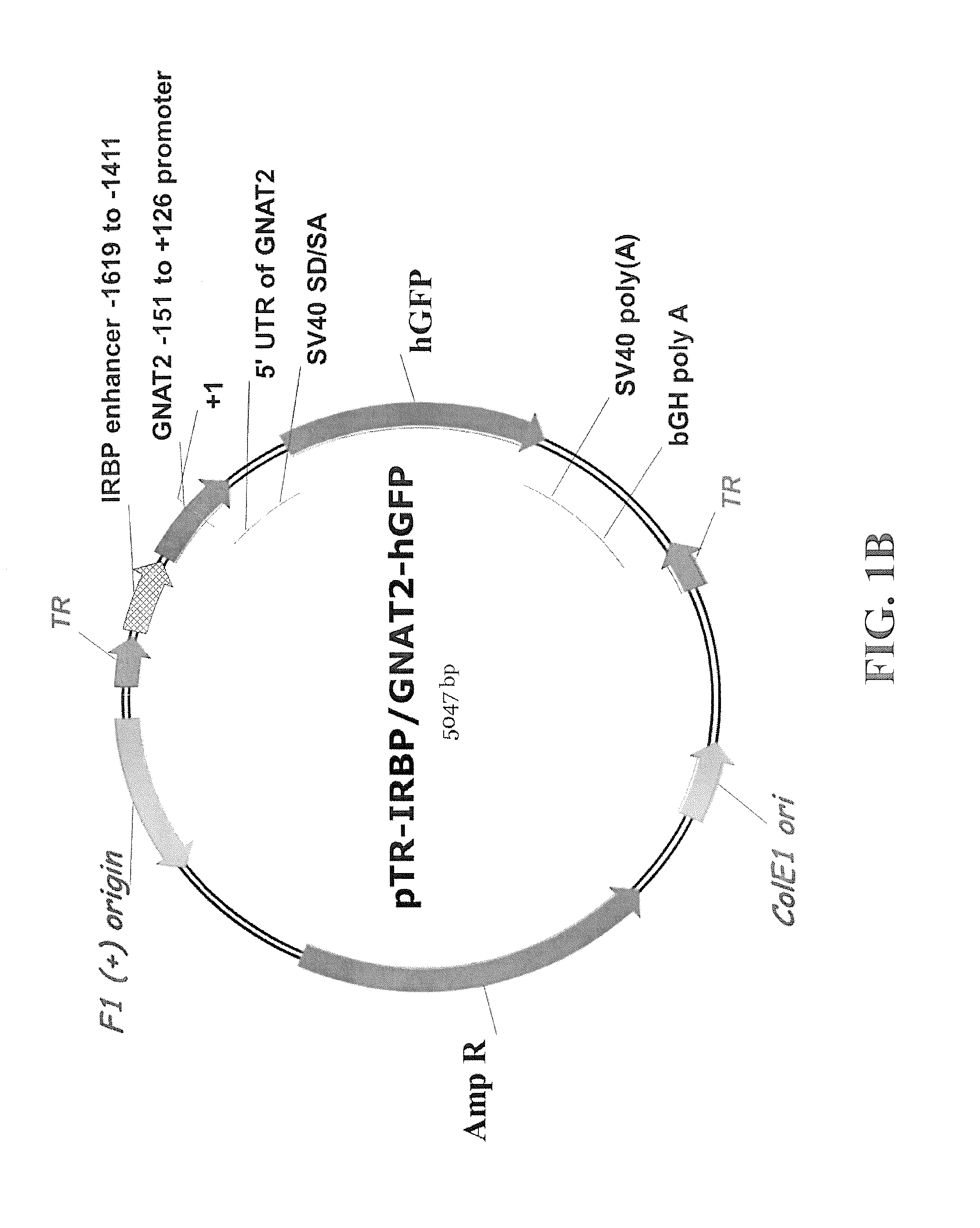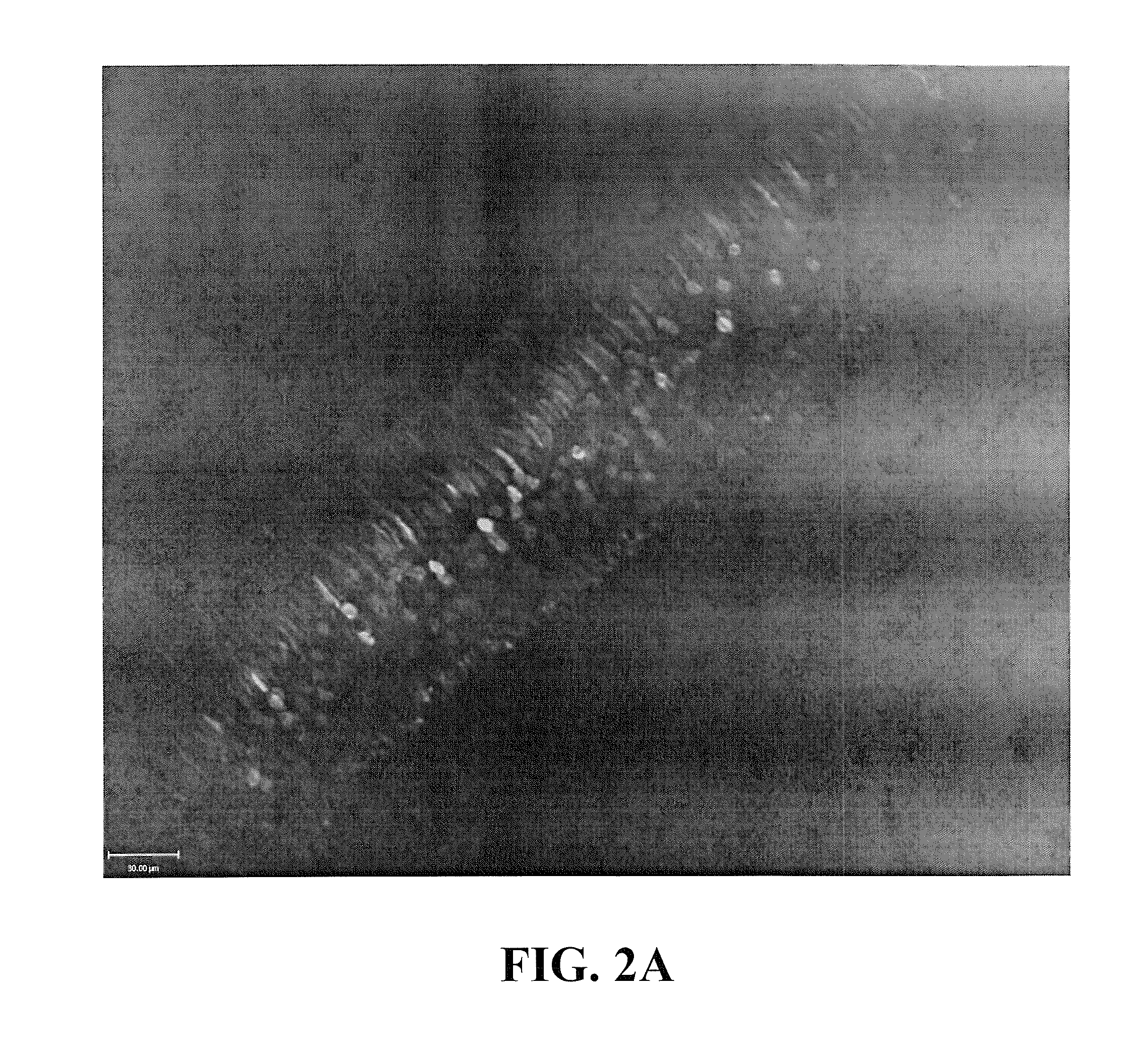Chimeric promoter for cone photoreceptor targeted gene therapy
a cone-targeted, promoter-targeted technology, applied in the direction of active genetic ingredients, viruses/bacteriophages, gene therapy proof-of-concept experiments of achm, etc., can solve the problems of reduced vector manufacturing efficiency, inability to see color, and inability to see in full sunlight (or at high light levels)
- Summary
- Abstract
- Description
- Claims
- Application Information
AI Technical Summary
Benefits of technology
Problems solved by technology
Method used
Image
Examples
example 1
Description of Chimeric IRBP / GNAT2 Promoter
[0058]In an attempt to improve upon previous cone targeting promoters used in conjunction with AAV mediated gene delivery, we created a chimeric promoter in which the sequence corresponding to −1619 to −1411 of the interphotoreceptor retinoid-binding protein (IRBP) gene was directly fused to −151 to +126 sequence of human cone transducin alpha-subunit (GNAT2). A depiction of the chimeric IRBP / GNAT2 promoter is given in FIG. 1A. Note that the arrangement of elements differs from those used in Ying et al. (1998) and Ying et al. (2000) (see FIG. 1 of Ying et al. (2000)). In this case the IRBP element is located upstream of the GNAT2 and there is no intervening sequence between the elements.
[0059]Results: The chimeric IRBP / GNAT2 promoter was incorporated into an AAV vector plasmid containing the reporter gene humanized green fluorescent protein (hGFP) (FIG. 1B) and packaged in AAV serotype 5 (AAV5). The resulting vector, AAV5-IRBP / GNAT2-GFP was...
example 2
[0060]Expression mediated by the chimeric IRBP / GNAT2 promoter was directly compared to that mediated by the PR2.1 promoter. AAV5-IRBP / GNAT2-hGFP vector was mixed at an equal ratio with AAV5-PR2.1-mCherry. FIG. 3 is a retinal section from mouse that was treated with the AAV5-IRPB / GNAT2-hGFP+AAV5-PR2.1-mCherry vector mixture and immunostained for GFP and then merged with an image captured for the red channel (mCherry expression is apparent as raw red spectrum fluorescence). All cones cell bodies positive for mCherry also appear to be positive for hGFP expression as indicated by the orange color (overlay of red and green appears as orange). Many cone cell bodies are GFP positive and do not appear to be mCherry positive.
example 3
[0061]The transcription factor neural retina-specific leucine zipper protein (NRL) is required for the development of rod from photoreceptor progenitor cells (Mears et al. (2001)). Mice lacking Nrl, i.e., Nrl knock-out mice (Nrl− / −), develop retina with an ‘all cone’ phenotype (Daniele et al. (2005)). Furthermore, the photoreceptor-cones of the Nrl− / − mouse most resemble S-cones, with levels of S-cone opsin expression and spectral sensitivity consistent with being characterized as S-cones (Nikonov et al. (2005)). In order to evaluate the ability of the chimeric IRBP-GNAT2 promoter to drive gene expression in S-cones we subretinally injected 6 week old Nrl− / − mice with AAV5-IRBP / GNAT2. Four weeks post injection with vector, fundus images were recorded using the appropriate filters to visualize raw GFP fluorescence (FIG. 4A). Strong GFP expression was observed in all eyes treated. Subsequently, eyes were harvested and retinas sectioned and immunostained for GFP and DAPI (FIG. 4B). GFP...
PUM
| Property | Measurement | Unit |
|---|---|---|
| wavelength | aaaaa | aaaaa |
| wavelength | aaaaa | aaaaa |
| wavelength | aaaaa | aaaaa |
Abstract
Description
Claims
Application Information
 Login to View More
Login to View More - R&D
- Intellectual Property
- Life Sciences
- Materials
- Tech Scout
- Unparalleled Data Quality
- Higher Quality Content
- 60% Fewer Hallucinations
Browse by: Latest US Patents, China's latest patents, Technical Efficacy Thesaurus, Application Domain, Technology Topic, Popular Technical Reports.
© 2025 PatSnap. All rights reserved.Legal|Privacy policy|Modern Slavery Act Transparency Statement|Sitemap|About US| Contact US: help@patsnap.com



